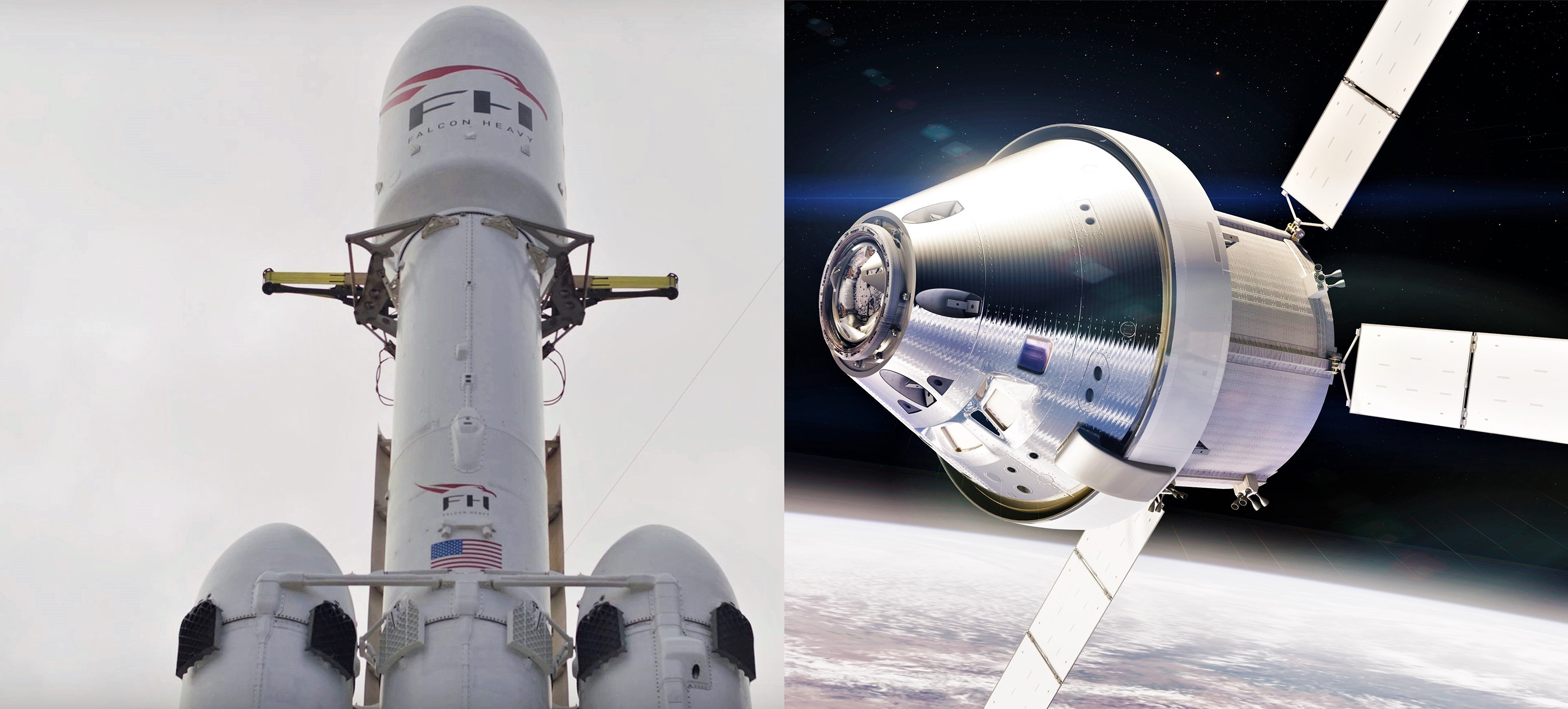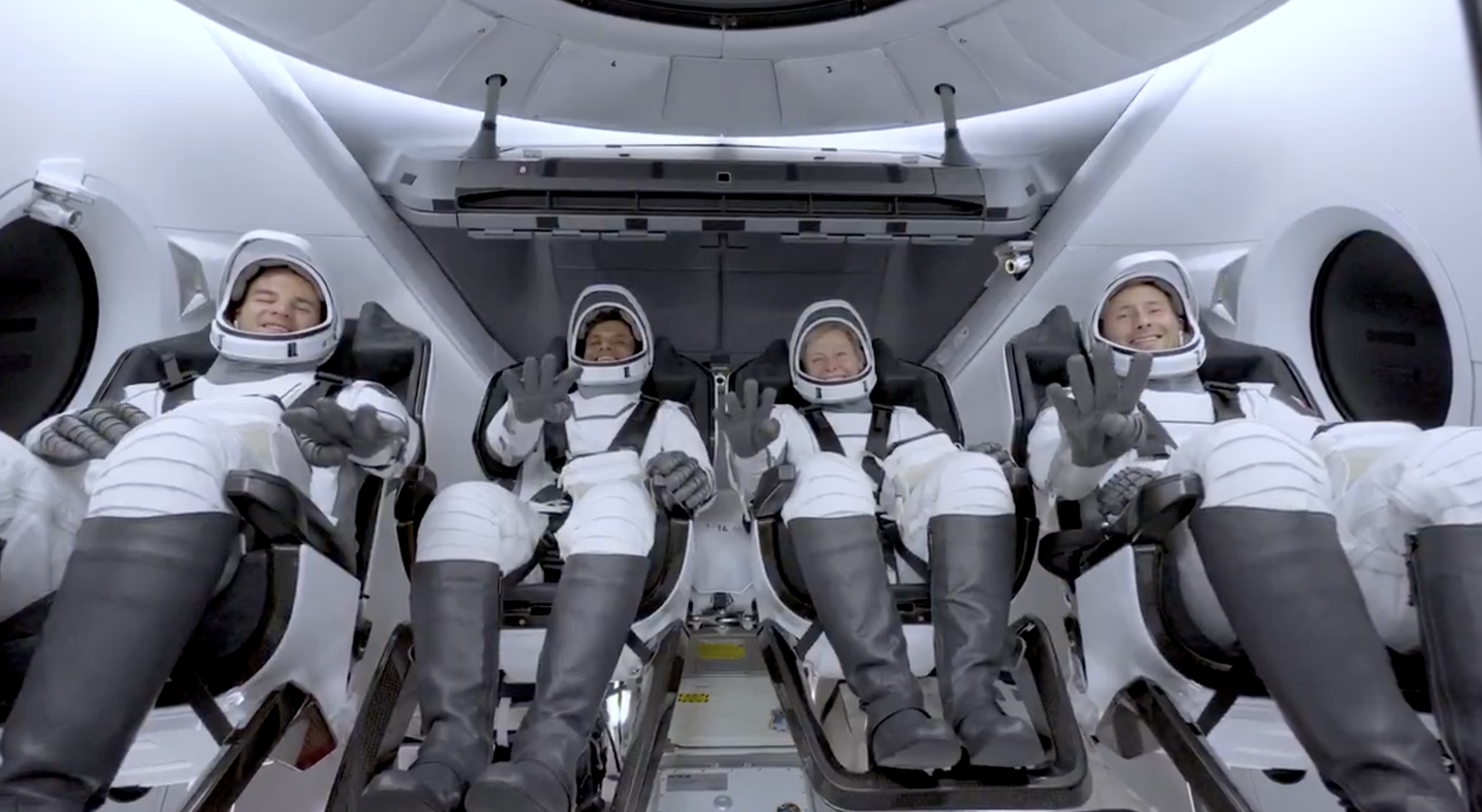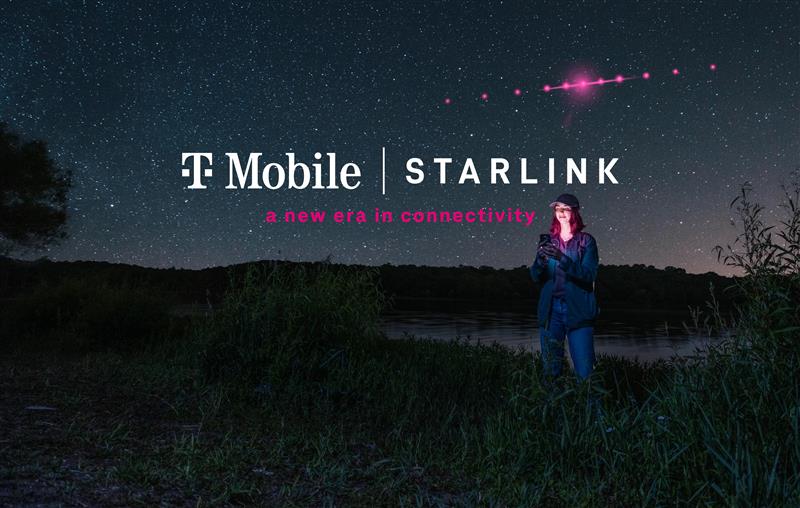

SpaceX
SpaceX’s Falcon Heavy could launch astronauts to the Moon, says NASA admin
Despite contrary comments made one week prior, NASA administrator Jim Bridenstine has affirmed – this time in no uncertain terms – that a two-week study investigating commercial options for launching the Orion spacecraft to the Moon has concluded that Falcon Heavy could be the only practical option if NASA chooses to proceed.
Due to fundamental performance and logistical constraints of both Delta IV Heavy and Falcon Heavy, as well as a lack in confidence in certain alternative paths, NASA now believes that a commercial option – Falcon Heavy – exists, but would face multiple major challenges, to the extent that Bridenstine indicated it would not be able to make the 2020 launch deadline with an unspecified budget. However, unlike his March 27th statements to Congress, he told the NASA stakeholder audience that the complex Falcon Heavy configuration “could be used in the future if [NASA can] get through all of [the challenges].” Reading between the lines, Administrator Bridenstine has effectively put the expensive and delay-ridden SLS rocket on notice if its contractors – primarily Boeing – fail to rise to the challenge and accelerate the rocket’s launch debut.
The April 1st comments – made before an audience of major NASA center leaders – are in stark contrast to dozens of comments made by Bridenstine in response to members of Congress on March 27th, in which he repeatedly went to bat for SLS launching Orion on EM-1 while scarcely mentioning commercial alternatives.
Despite the apparent incoherence of Administrator Bridenstine’s continuing comments, the sad – but also promising –
Sitting before the Senate Commerce, Science, and Transportation committee on March 13th, he announced the commercial Orion launch study as a token of recognition that NASA needs to get better at staying on-schedule and on-budget for US taxpayers and Congressional purse string-holders. After the US Vice President challenged NASA to return humans to the Moon with any means necessary by 2024, Bridenstine affirmed that NASA would do everything in its power to meet that charge, including the exploitation of commercial alternatives. In a March 27th hearing before members of Congress with explicit stakes in the SLS rocket’s pork, he barely mentioned commercial alternatives for Orion EM-1, instead focusing on a paired study aiming to accelerate the SLS launch debut schedule while also reiterating his confidence that Boeing and other contractors can rise to the occasion.
In his latest April 1st comments on commercial launch alternatives for Orion’s Moon mission debut, Bridenstine spoke to nearly all of NASA’s major center, program, and directive managers and stuck to the technical facts of the matters at hand. He repeatedly acknowledged that both launching an uncrewed Orion spacecraft to the Moon before the end of 2020 and returning astronauts to its surface by the end of 2024 would be extraordinary challenges and could require far-reaching changes and reforms throughout NASA. He also reaffirmed his intent to ensure that nothing be taken off the table as an option to accomplish those ambitious goals. This included an indication that (in more polite terms, of course) the
We see, in history, that in the past we have had an agenda to get to the Moon and then the resources don’t materialize and it gets canceled, and then we have another agenda to go to the Moon and the resources don’t materialize and it gets canceled. From my perspective, it is my objective to get the resources necessary to accomplish [this goal]. It is also my commitment to make sure that people understand the history here and that we can have a great, ambitious goal, but without the resources, it won’t be accomplished.
NASA Administrator Jim Bridenstine, 04/01/2019


“A whole host of challenges”
The specifics of what the NASA administrator briefly hinted at for a Falcon Heavy launch of EM-1 are spectacular enough to warrant additional discussion. According to Bridenstine, the two-week study NASA conducted essentially concluded that ULA’s Delta IV Heavy rocket was not a practical option for several major reasons. First, it seems that NASA has little to no confidence that Lockheed Martin and its contractors would be able to retrofit EM-1’s Orion and European Service Module (ESM) with the hardware and software needed for on-orbit rendezvous with a boost stage in time for a 2020 launch. Those capabilities were not planned for Orion until EM-3, NET 2024 in an absolute best-case scenario. This would entirely preclude a distributed launch solution, regardless of whether Delta IV Heavy is capable of placing the payloads in orbit.
Even if a rendezvous was on the table, a distributed launch scenario would still be impossible with either two Falcon Heavies or Delta IV Heavies, as both launches would have to occur as close to simultaneously as possible – optimally just a few hours apart. SpaceX has only one pad capable of supporting Falcon Heavy, while ULA’s Delta IV Heavy has two pads, but only one that can launch to the required orbit. A bigger problem: Delta IV Heavy is capable of launching no more than ~28,400 kg (63,000 lb) to an altitude of ~200 km (120 mi), which definitely rules out a Delta IV Heavy launch of the ICPS upper stage (~30,000 kg, 66,000 lb) and could also fall short for Orion/ESM (~26,000 kg, 57,000 lb), assuming that both would need to be launched to an elliptical orbit of 1800 km (1150 mi).

Reddit /u/DoYouWonda actually visualized this potential (but highly improbable) scenario and published a brief abstract analyzing the possibility on March 15th. (Reddit /u/DoYouWonda, minor edits by Teslarati)
Due to NASA’s implied assumption that on-orbit rendezvous of Orion and a booster stage is out of the question and the potential performance shortcomings of Delta IV Heavy, as well as Falcon Heavy’s inability to launch Orion/ESM towards lunar orbit, only one option apparently remains. According to Bridenstine, NASA concluded that a mission profile in which Falcon Heavy places Orion, a service module, and an ICPS upper stage in orbit in a single launch may actually be a serious option – and the only option – for a near-term commercial alternative for Orion’s first operational test flight. The unofficial graphic above offers a rough glimpse of what that massive payload might look like atop Falcon Heavy.
[Finally], there is another solution out there: a Falcon Heavy with an ICPS at the top – talk about strange bedfellows – and an ESM and Orion crew capsule. That ultimately has the ability to potentially – gosh, [NASA Associate Administrator Bill] Gerst is gonna be so mad at me for saying all of this… by the way, none of this was cleared by Gerstenmaier, he’s still the best rocket scientist we have [camera pans to Gerst, laughter], no insult to anyone else in the room – so, at the end of the day, there is a solution here that could potentially work for the future.
It would require time, it would require cost, and there is risk involved, but guess what? If we’re gonna land boots on the Moon in 2024, we have time, and we have the ability to accept some risk and make some modifications. All of that is on the table. There is nothing sacred here that is off the table, and [FH+ICPS+Orion/ESM] is a potential capability that could help us land on the Moon in 2024.
NASA Administrator Jim Bridenstine, 04/01/2019
Combined, the Orion spacecraft, its ESM, and a fueled ICPS boost stage would weigh no less than 56,000 kg (~123,000 lb) at launch, relative to Falcon Heavy’s reported expendable performance of about 64,000 kg (140,000 lb) to Low Earth Orbit (LEO). In other words, it’s possible that Falcon Heavy could effectively do the exact same job as SLS would need to do to perform a nominal Orion EM-1 orbital insertion. However, a huge number of challenges remain for such an exotic Falcon Heavy configuration. Pad 39A would need to be outfitted with an array of systems, including a liquid hydrogen propellant plant and the ability to load Orion and its service module with hypergolic propellant while atop Falcon Heavy and vertical on the pad. To allow for vertical Orion/ESM/ICPS processing and fueling and support the massive weight and height (~95m vs. 70m) of the vehicle, the transporter-erector would need to be heavily modified. Additionally, Falcon Heavy’s aerodynamic characteristics would need to be entirely reanalyzed for such a significantly taller payload fairing.

But, as Bridenstine made clear above, those challenges would be par for the course of accomplishing something as audacious as returning humans to the Moon in less than six years. Whether or not NASA actually pursues or Congress funds such an alternative beyond the drawing board, the cat is now officially out of the bag. A potentially satisfactory replacement for SLS will now hang over the program’s head for the indefinite future, a constant threat in the (quite likely) event that the many SLS/Orion contractors fail – once again – to even loosely adhere to their budget and schedule targets. Falcon Heavy will be waiting.
Check out Teslarati’s Marketplace! We offer Tesla accessories, including for the Tesla Cybertruck and Tesla Model 3.
News
SpaceX launches Ax-4 mission to the ISS with international crew
The SpaceX Falcon 9 launched Axiom’s Ax-4 mission to ISS. Ax-4 crew will conduct 60+ science experiments during a 14-day stay on the ISS.

SpaceX launched the Falcon 9 rocket kickstarting Axiom Space’s Ax-4 mission to the International Space Station (ISS). Axiom’s Ax-4 mission is led by a historic international crew and lifted off from Kennedy Space Center’s Launch Complex 39A at 2:31 a.m. ET on June 25, 2025.
The Ax-4 crew is set to dock with the ISS around 7 a.m. ET on Thursday, June 26, 2025. Axiom Space, a Houston-based commercial space company, coordinated the mission with SpaceX for transportation and NASA for ISS access, with support from the European Space Agency and the astronauts’ governments.
The Ax-4 mission marks a milestone in global space collaboration. The Ax-4 crew, commanded by U.S. astronaut Peggy Whitson, includes Shubhanshu Shukla from India as the pilot, alongside mission specialists Sławosz Uznański-Wiśniewski from Poland and Tibor Kapu from Hungary.
“The trip marks the return to human spaceflight for those countries — their first government-sponsored flights in more than 40 years,” Axiom noted.
Shukla’s participation aligns with India’s Gaganyaan program planned for 2027. He is the first Indian astronaut to visit the ISS since Rakesh Sharma in 1984.
Axiom’s Ax-4 mission marks SpaceX’s 18th human spaceflight. The mission employs a Crew Dragon capsule atop a Falcon 9 rocket, designed with a launch escape system and “two-fault tolerant” for enhanced safety. The Axiom mission faced a few delays due to weather, a Falcon 9 leak, and an ISS Zvezda module leak investigation by NASA and Roscosmos before the recent successful launch.
As the crew prepares to execute its scientific objectives, SpaceX’s Ax-4 mission paves the way for a new era of inclusive space research, inspiring future generations and solidifying collaborative ties in the cosmos. During the Ax-4 crew’s 14-day stay in the ISS, the astronauts will conduct nearly 60 experiments.
“We’ll be conducting research that spans biology, material, and physical sciences as well as technology demonstrations,” said Whitson. “We’ll also be engaging with students around the world, sharing our experience and inspiring the next generation of explorers.”
SpaceX’s Ax-4 mission highlights Axiom’s role in advancing commercial spaceflight and fostering international partnerships. The mission strengthens global space exploration efforts by enabling historic spaceflight returns for India, Poland, and Hungary.
News
Starlink Cellular’s T-Mobile service to grow with third-party app data
From Oct 2025, T-Satellite will enable third-party apps in dead zones! WhatsApp, X, AccuWeather + more coming soon.

Starlink Cellular’s T-Mobile service will expand with third-party app data support starting in October, enhancing connectivity in cellular dead zones.
T-Mobile’s T-Satellite, supported by Starlink, launches officially on July 23. Following its launch, T-Mobile’s Starlink Cellular service will enable data access for third-party apps like WhatsApp, X, Google, Apple, AccuWeather, and AllTrails on October 1, 2025.
T-Mobile’s Starlink Cellular is currently in free beta. T-Satellite will add MMS support for Android phones on July 23, with iPhone support to follow. MMS support allows users to send images and audio clips alongside texts. By October, T-Mobile will extend emergency texting to all mobile users with compatible phones, beyond just T-Mobile customers, building on its existing 911 texting capability. The carrier also provides developer tools to help app makers integrate their software with T-Satellite’s data service, with plans to grow the supported app list.
T-Mobile announced these updates during an event celebrating an Ookla award naming it the best U.S. phone network, a remarkable turnaround from its last-place ranking a decade ago.
“We not only dream about going from worst to best, we actually do it. We’re a good two years ahead of Verizon and AT&T, and I believe that lead is going to grow,” said T-Mobile’s Chief Operating Officer Srini Gopalan.
T-Mobile unveiled two promotions for its Starlink Cellular services to attract new subscribers. A free DoorDash DashPass membership, valued at $10/month, will be included with popular plans like Experience Beyond and Experience More, offering reduced delivery and service fees. Meanwhile, the Easy Upgrade promotion targets Verizon customers by paying off their phone balances and providing flagship devices like the iPhone 16, Galaxy S25, or Pixel 9.
T-Mobile’s collaboration with SpaceX’s Starlink Cellular leverages orbiting satellites to deliver connectivity where traditional networks fail, particularly in remote areas. Supporting third-party apps underscores T-Mobile’s commitment to enhancing user experiences through innovative partnerships. As T-Satellite’s capabilities grow, including broader app integration and emergency access, T-Mobile is poised to strengthen its lead in the U.S. wireless market.
By combining Starlink’s satellite technology with strategic promotions, T-Mobile is redefining mobile connectivity. The upcoming third-party app data support and official T-Satellite launch mark a significant step toward seamless communication, positioning T-Mobile as a trailblazer in next-generation wireless services.
News
Starlink expansion into Vietnam targets the healthcare sector
Starlink aims to deliver reliable internet to Vietnam’s remote clinics, enabling telehealth and data sharing.

SpaceX’s Starlink expansion into Vietnam targets its healthcare sector. Through Starlink, SpaceX seeks to drive digital transformation in Vietnam.
On June 18, a SpaceX delegation met with Vietnam’s Ministry of Health (MoH) in Hanoi. SpaceX’s delegation was led by Andrew Matlock, Director of Enterprise Sales, and the discussions focused on enhancing connectivity for hospitals and clinics in Vietnam’s remote areas.
Deputy Minister of Health (MoH) Tran Van Thuan emphasized collaboration between SpaceX and Vietnam. Tran stated: “SpaceX should cooperate with the MoH to ensure all hospitals and clinics in remote areas are connected to the StarLink satellite system and share information, plans, and the issues discussed by members of the MoH. The ministry is also ready to provide information and send staff to work with the corporation.”
The MoH assigned its Department of Science, Technology, and Training to work with SpaceX. Starlink Vietnam will also receive support from Vietnam’s Department of International Cooperation. Starlink Vietnam’s agenda includes improving internet connectivity for remote healthcare facilities, developing digital infrastructure for health examinations and remote consultations, and enhancing operational systems.
Vietnam’s health sector is prioritizing IT and digital transformation, focusing on electronic health records, data centers, and remote medical services. However, challenges persist in deploying IT solutions in remote regions, prompting Vietnam to seek partnerships like SpaceX’s.
SpaceX’s Starlink has a proven track record in healthcare. In Rwanda, its services supported 40 health centers, earning praise for improving operations. Similarly, Starlink enabled remote consultations at the UAE’s Emirati field hospital in Gaza, streamlining communication for complex medical cases. These successes highlight Starlink’s potential to transform Vietnam’s healthcare landscape.
On May 20, SpaceX met with Vietnam’s Ministry of Industry and Trade, announcing a $1.5 billion investment to provide broadband internet, particularly in remote, border, and island areas. The first phase includes building 10-15 ground stations across the country. This infrastructure will support Starlink’s healthcare initiatives by ensuring reliable connectivity.
Starlink’s expansion in Vietnam aligns with the country’s push for digital transformation, as outlined by the MoH. By leveraging its satellite internet expertise, SpaceX aims to bridge connectivity gaps, enabling advanced healthcare services in underserved regions. This collaboration could redefine Vietnam’s healthcare infrastructure, positioning Starlink as a key player in the nation’s digital future.
-

 News5 days ago
News5 days agoTesla Robotaxi’s biggest challenge seems to be this one thing
-

 News2 weeks ago
News2 weeks agoTesla confirms massive hardware change for autonomy improvement
-

 Elon Musk2 weeks ago
Elon Musk2 weeks agoElon Musk slams Bloomberg’s shocking xAI cash burn claims
-

 News2 weeks ago
News2 weeks agoTesla features used to flunk 16-year-old’s driver license test
-

 News2 weeks ago
News2 weeks agoTesla China roars back with highest vehicle registrations this Q2 so far
-

 News2 weeks ago
News2 weeks agoTexas lawmakers urge Tesla to delay Austin robotaxi launch to September
-

 News2 weeks ago
News2 weeks agoTesla dominates Cars.com’s Made in America Index with clean sweep
-

 News2 weeks ago
News2 weeks agoTesla’s Grok integration will be more realistic with this cool feature





















